Unit Operations: A Practical Introduction for Engineers
Jump to the FAQ Section ↓Unit Operations Explained
Unit operations are the foundation of chemical engineering.
They represent the key physical steps used to transform raw materials into valuable products—such as heating, mixing, separating, and pressurizing.
From pharmaceuticals to petrochemicals, these core operations are present in nearly every industrial process.
Heat transfer, mass transfer, mechanical operations, fluid flow, and membrane separation are the core unit operations behind many industrial processes.
Each one is based on well-known physical laws and engineering principles.
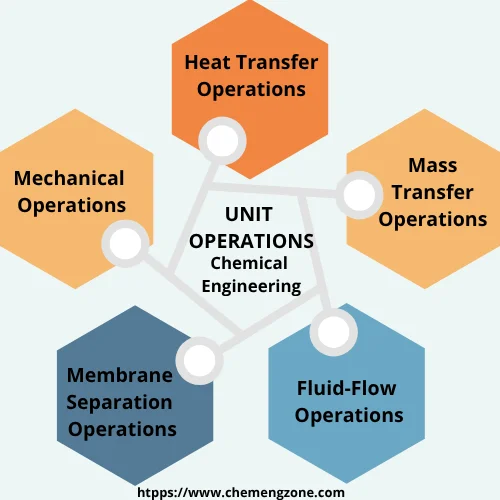
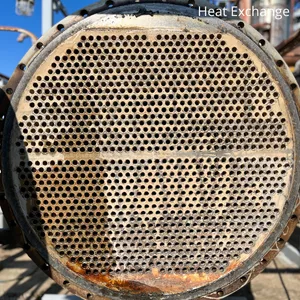
Heat Exchange
Heat-exchange operations are based on the three main modes of heat transfer: conduction, convection, and radiation.
These operations are carried out using specific equipment such as:
shell-and-tube heat exchangers, plate heat exchangers, double-pipe exchangers, and spiral heat exchangers.
Each type is chosen based on fluid properties, available space (some heat exchangers, like shell-and-tube types, can be very large), and process requirements.
Main Heat Transfer Unit Operations
Sensible Heating and Cooling
This operation is used to raise or lower the temperature of a process stream without inducing a phase change. It supports temperature control in reactions, separations, or feed conditioning.
Typical equipment: shell-and-tube heat exchanger, plate heat exchanger, double-pipe heat exchanger.
Boiling / Reboiling
Boiling or reboiling provides the latent heat required to convert liquid into vapor, typically used in distillation columns and flash vessels to drive phase separation.
Typical equipment: reboiler (kettle, thermosyphon, forced circulation types).
Condensation
Condensation involves converting vapor into liquid, usually to recover solvents, enable reflux, or reduce emissions. It is the reverse of boiling and is vital in closed-loop systems.
Typical equipment: condenser (vertical, horizontal, air-cooled or water-cooled).
Evaporation and Concentration
This operation removes water or solvents by converting them into vapor, thereby increasing the concentration of the solute. It is widely applied in purification, drying, and pre-crystallization stages.
Typical equipment: falling film evaporator, rising film evaporator, forced circulation evaporator.
Cooling Crystallisation
Cooling crystallisation promotes the formation of solid crystals from a supersaturated solution through controlled cooling. It is used to ensure product purity and uniform crystal size, especially in pharmaceuticals.
Typical equipment: batch crystallizer, draft-tube baffle crystallizer, scraped surface crystallizer.
Thermal Insulation and Heat-Loss Control
This operation aims to minimize unwanted heat loss or gain from equipment, pipes, and tanks to improve energy efficiency and maintain temperature stability across the process.
Typical equipment: insulated vessels, insulated pipelines, jacketed tanks with insulation layers.
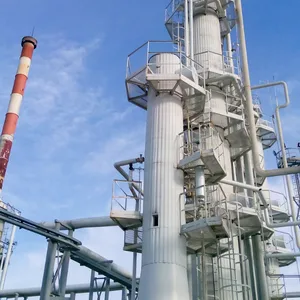
Mass Transfer
Mass transfer operations are essential for separating and purifying mixtures involving gas, liquid, and solid phases.
These unit operations rely on concentration gradients to move components from one phase to another, such as gas to liquid, liquid to liquid, or solid to liquid.
Processes like distillation, absorption, extraction, and crystallization are all governed by mass transfer principles—most notably Fick’s Law of Diffusion and phase equilibrium.
Understanding these fundamentals enables chemical engineers to select appropriate operations and design efficient separation systems tailored to each application.
Distillation
Distillation separates components in a mixture based on differences in volatility. It relies on vapor–liquid equilibrium and is widely used in petrochemical, pharmaceutical, and food industries.
Typical equipment: distillation columns, trays (sieve, valve, bubble cap), structured packing, reboilers, condensers.
Learn more about distillation – how it works and where it’s used.
Absorption
Absorption transfers a gas-phase solute into a liquid solvent, typically used for gas purification or removal of contaminants.
Typical equipment: packed towers, tray columns, spray columns, gas scrubbers.
Stripping
Stripping removes volatile components from a liquid by contacting it with a gas, usually steam or air. It is essentially the reverse of absorption.
Typical equipment: stripping columns, steam strippers, packed towers, tray columns.
Liquid–Liquid Extraction
This operation separates solutes based on their solubility in two immiscible liquid phases. It is used when distillation is ineffective or thermally unsuitable.
Typical equipment: mixer-settlers, rotating disc contactors, pulsed columns, centrifugal extractors.
Leaching (Solid–Liquid Extraction)
Leaching extracts solutes from solids using a liquid solvent. Common in mining, pharmaceuticals, and food processing.
Typical equipment: agitated leach tanks, percolators, rotary drum extractors, counter-current extractors.
Adsorption
Adsorption captures solutes from a fluid onto the surface of a solid adsorbent, commonly used in gas purification or water treatment.
Typical equipment: fixed-bed adsorbers, moving-bed systems, activated carbon columns, silica gel beds.
Crystallization
Crystallization separates solids from a solution by inducing crystal formation through cooling or evaporation. It is critical for purity and product consistency.
Typical equipment: batch crystallizers, forced-circulation crystallizers, vacuum crystallizers, draft-tube baffle crystallizers.
Mechanical Unit Operations
Mechanical operations include mixing, crushing, filtering, and the transport of solids or slurries.
These processes involve the physical movement and manipulation of materials.
They are widely used in chemical engineering to handle solid-liquid systems and prepare materials for further processing.
To design and control these movements effectively, chemical engineers rely on the principles of classical mechanics—especially Newton’s Laws of Motion.
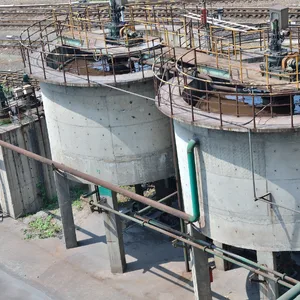
These fundamental laws explain how materials behave when forces are applied and form the basis for calculating movement, resistance, and energy transfer in equipment design.
The three laws are:
- Law of Inertia – A body stays at rest or moves in a straight line at constant speed unless acted upon by a force.
- Second Law (F = ma) – The force needed to move a body depends on its mass and the acceleration required.
- Action and Reaction – For every applied force, there is an equal and opposite reaction.
Types of Mechanical Unit Operations
Mixing
Combines solids with liquids (slurries) or mixes solid fractions to create a uniform feed for reaction or separation.
→ Typical equipment: Ribbon blender, paddle mixer, high-shear mixer
Filtration
Separates solids from liquids by forcing slurry through a porous medium to form a removable solid cake.
→ Typical equipment: Filter press, rotary vacuum filter, membrane filter
Sedimentation
Allows solids to settle by gravity in order to concentrate them or clarify liquid streams.
→ Typical equipment: Gravity thickener, clarifier tank
Decantation
Removes the clarified liquid phase without disturbing the settled solids.
→ Typical equipment: Decanter, siphon system, overflow weir tank
Centrifugation
Applies centrifugal force to speed up solid–liquid separation, improving clarity and throughput.
→ Typical equipment: Disc-stack centrifuge, decanter centrifuge
Screening
Separates particles based on size to ensure uniformity or remove oversize material.
→ Typical equipment: Vibrating screen, rotary trommel, gyratory sifter
Milling
Reduces particle size for better handling or further processing.
→ Typical equipment: Jaw crusher, hammer mill, ball mill, pin mill

Membrane Separation
Membrane separation operations use semi-permeable barriers to selectively separate particles, solutes, or solvents based on properties such as size, charge, or chemical affinity.
These processes are governed by principles like Darcy’s Law, which describes how fluids flow through porous materials, and diffusion mechanisms, where molecules move from areas of higher to lower concentration.
Membrane separation is widely used in water treatment, bioprocessing, and pharmaceutical production.
The choice of membrane type depends on the molecular size to be retained and the level of purity required for the specific application.
Membrane Separation Technologies
Microfiltration (MF)
Removes suspended solids and microorganisms (0.1–10 µm) from fluids. Common in food and beverage processing, wastewater polishing, and air filtration.
→ Typical equipment: Microfiltration cartridge modules, hollow fiber membranes, ceramic MF units
Ultrafiltration (UF)
Retains macromolecules such as proteins and polysaccharides while allowing water and small solutes to pass.
→ Typical equipment: Hollow fiber UF modules, spiral-wound membrane systems, tubular UF units
Nanofiltration (NF)
Allows monovalent ions (Na⁺, Cl⁻) to pass while rejecting divalent ions (Ca²⁺, SO₄²⁻) and larger organic molecules.
→ Typical equipment: Spiral-wound NF membranes, high-pressure modules, crossflow systems
Reverse Osmosis (RO)
Blocks nearly all dissolved solutes, producing ultrapure water for industrial and pharmaceutical applications.
→ Typical equipment: RO skids, high-pressure RO modules, desalination units
Electrodialysis (ED)
Uses an electric field and ion-exchange membranes to selectively remove ions from a solution.
→ Typical equipment: Electrodialysis stacks, alternating cation-anion membrane units
Membrane Contactors
Facilitate mass transfer between two phases (e.g., gas–liquid) without mixing them. Used for gas removal or capture.
→ Typical equipment: Hollow fiber membrane contactors, degassing modules, CO₂ strippers
Fluid Dynamics in Chemical Engineering
Fluid-flow operations involve the transport, control, and mixing of liquids and gases, especially during their movement through pipes, pumps, and valves in chemical plants.
Typical equipment: centrifugal pumps, flow control valves, pipeline networks.
The study of fluid mechanics is essential for designing safe and efficient systems.
It helps engineers understand how fluids behave under different flow conditions.
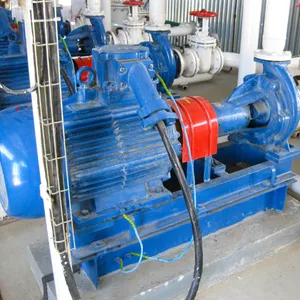
This knowledge is also important during HAZOP analyses. Flow disruptions, blockages, or pressure variations can lead to significant process risks.
Main Fluid-Flow Unit Operations
Fluidization & Pneumatic Conveying
This operation is used to suspend solid particles in a rising stream of gas or liquid (fluidization) or to transport solids through pipelines using high-velocity gas (pneumatic conveying). These methods are essential for drying, coating, or transferring fine materials like powders.
Typical equipment: fluidized beds, pneumatic conveyors, blowers or compressors, rotary valves (airlocks).
Pumping
Pumping involves transferring liquids from one vessel or unit to another at specific flow rates and pressures. The choice of pump depends on fluid viscosity, pressure requirements, and flow conditions.
Typical equipment: centrifugal pumps, diaphragm pumps, gear pumps, peristaltic pumps.
Pipeline Transport
This operation refers to the movement of fluids through networks of pipes and fittings, accounting for frictional pressure losses, elevation changes, and flow regimes. Engineers must also consider two-phase flow and appropriate material selection.
Typical equipment: piping systems, bends, reducers, expansion joints, pipe supports, two-phase separators.
Valve & Flow Control
Fluid streams in industrial systems must be precisely regulated to ensure process stability and safety. Flow control involves adjusting velocity, pressure, or direction through a variety of mechanical devices.
Typical equipment: control valves (globe, ball, butterfly), pressure-reducing valves, orifices, flow meters (rotameter, venturi, coriolis).
Static Mixing
Static mixing achieves homogeneous blending of two or more fluid streams directly within a pipe, without the use of moving parts. This ensures low-maintenance mixing in continuous processes.
Typical equipment: inline static mixers (Kenics®, Sulzer), helical or tab-type inserts.
Dynamic Agitation
This involves the active mixing of liquids or slurries using mechanical agitators in tanks or reactors. The objective is to ensure uniform concentration, improve heat transfer, or promote reaction kinetics.
Typical equipment: agitated vessels with impellers (Rushton turbines, marine propellers, anchor stirrers), baffles.
Ing. Ivet Miranda
Looking to Build a Stronger Foundation in Chemical Engineering? Start Here:
What Is Distillation and How It Works in Real Industrial Processes
Chemical Engineering Guide: 14 Useful Topics for Beginners
What Does a Chemical Engineer do in Industrial Enviroments?
The 4 Safety Management System Pillars in a Chemical Plant
5 Key Differences: Rupture Disc vs Relief Safety Valve
Thermodynamics for Engineers
What is the Process of distilling Water, Alcohol and Oil?
Recommended Books & Academic Resources
- Perry’s Chemical Engineers’ Handbook, 9th Edition – D.W. Green, M. SouthardThe definitive reference for all major unit operations, with detailed correlations, equipment specs, and industrial standards.
Perry’s Chemical Engineers’ Handbook – View on Amazon
Unit Operations of Chemical Engineering – W.L. McCabe, J.C. Smith, P. Harriott
A foundational textbook covering the theoretical and practical aspects of heat transfer, mass transfer, and fluid flow.
Transport Processes and Separation Process Principles – Christie J. Geankoplis
Focuses on momentum, heat, and mass transport with clear examples and extensive chapters on separation processes.
A Heat Transfer Textbook – J.H. Lienhard IV & V (MIT)
Free, rigorous and comprehensive textbook on conduction, convection, and exchanger design.
Mass Transfer Operations for the Practicing Engineer – L.K. Doraiswamy (Wiley)
An industry-focused guide for applying mass transfer principles to real-world problems.
Academic Link:
MIT – Chemical Engineering Unit Operations Laboratory: A pioneer course at MIT introducing the concept and practice of unit operations—ideal for understanding the historical and practical context of the field.
FAQ
What is unit operation with example?
A unit operation involves physical changes such as phase transitions, mixing, or separation. In contrast, a unit process involves chemical transformations, like chemical reactions.
For example, evaporation is a unit operation, while chlorination is a unit process.
What is unit operation in pharmaceutical industry?
In the pharmaceutical industry, unit operations include essential steps like granulation, tablet compression, coating, and sterilization. Each step ensures that the final drug product meets strict quality and safety standards.
What is unit operation and unit process?
A unit operation is a fundamental physical step used in chemical engineering processes, such as filtration, distillation, crystallization, or heat exchange. It involves physical changes like phase separation, concentration, or energy transfer, but does not alter the chemical composition of the substances involved.
A unit process, instead, refers to a chemical transformation, where a substance undergoes a change in its molecular structure. Examples include oxidation, neutralization, and polymerization.
What are unit operations in food processing?
Common unit operations in food processing include pasteurization, emulsification, freezing, drying, and packaging.
These operations are essential to maintain food safety and extend shelf life.